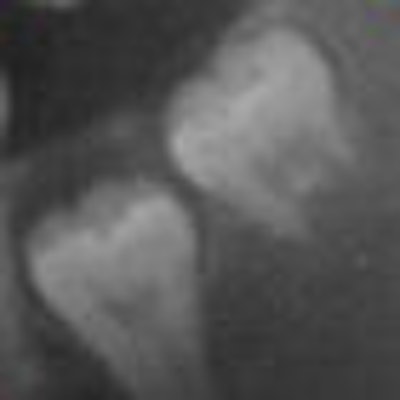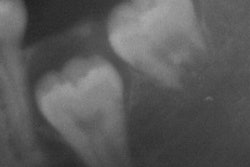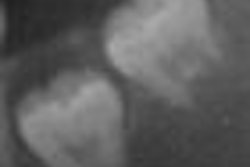
There is an ongoing debate about how to manage third molars in dentistry, particularly the risks associated with removing or not removing them once they erupt.
What if there was a way to prevent them from ever growing in at all?
A new study in the Journal of the American Dental Association has striking conclusions that have even caught the attention of the national news media.
"Inferior alveolar nerve blocks (IANBs) administered to young children when the third-molar tooth bud is immature may stop third-molar development," wrote the study authors, from the department of pediatric dentistry at the Tufts University School of Dental Medicine (JADA, April 2013, Vol. 144: 4, pp. 389-395).
In the lengthy, early stages of third-molar development, tooth buds are particularly small and vulnerable to injury since they are not covered by bone. Their formation also is quite close -- within 1 cm -- of where the IANB is injected. The possibility of a connection between incidental trauma of third-molar buds from IANBs and the cessation of their development had never been explored.
Without outside influences, third-molar agenesis of at least one tooth is not an uncommon occurrence in youngsters, the researchers noted. For example, a study performed by researchers at the First Faculty of Medicine at Charles University and General Teaching Hospital in Prague, Czech Republic, determined that "agenesis of 1-4 third molars was present in 22.5% (25.6% in boys and 19.4% in girls)" of 50 boys and 50 girls from the Czech Republic included in the study (Prague Medical Report, February 2004, Vol. 105:1, pp. 35-52).
Selecting the cohort
Against that backdrop, the researchers in the present study conducted a retrospective study to examine whether there was a statistically significant increase in the incidence of radiographically missing mandibular third-molar follicles in children ages 7 to 12 years who had received an IANB at 6 years or younger.
With permission, the researchers scoured the patient database of patients from the pediatric department in the School Of Dental Medicine at Tufts for their cohort. The patients had to be continuously active in the clinic beginning before age 6 but younger than age 12 and who have had a panoramic radiograph taken. The included children had an IANB injection between ages 2 and 6; those who had their panoramic radiograph taken within three years of receiving their IANB were not included. Other exclusions were systemic disease and therapeutic radiation exposure levels. In total, the study included 220 patients with 439 third-molar developmental sites.
The researchers reviewed the panoramic radiographs for evidence of third-molar development and separated the quadrants into two groups: 376 were in the control with no IANB history, and 63 were in the test group that had an IANB history. The p-value for the slope of the comparison of the test group with the control group was 0.013, indicating a statistically significant difference, the researchers found.
"The results of our retrospective study indicated that a significant statistical association existed between an IANB administered in children younger than 6 years and the absence of third-molar follicle development later in life, possibly leading to complete clinical third-molar agenesis," they wrote. In addition, there was evidence that the higher incidence of missing third-molar follicles in the test group compared with that in the control group "did not happen by chance alone."
Their findings indicate that more research into a possible connection is warranted, they concluded.
An expert's reaction
However, Jay Friedman, DDS, MPH, who has written extensively on the topic of third-molar extractions, cautioned that "while the study is interesting, it's not a certainty," he told DrBicuspid.com. "We learned a long time ago that there are so many studies with statistically significant results that turn out to be false."
The premise of the study was related to the improper placement of the IANB needle, he added. "But sometimes that's how we discover things," he admitted.
Looking forward, the study could be a part of a new approach to treating third molars. There is debate about the efficacy of prophylactic third-molar extraction, but the possibility of not needing to extract them at all is one worth considering, Dr. Friedman noted.
"What if it were possible to develop a laser to heat up the tissue and destroy the tooth germ?" he asked, referring to a method being tested by the Tufts researchers. "It would be painless and noninvasive."
Dr. Friedman also observed a contradictory element of the paper. “At the very end of the report they're talking about taking care to protect [third molars], which seems like a strange thing to say, given the nature of the report,” he said. The sentence he is referring to reads, “Using care when administering an IANB to protect potentially vulnerable third-molar tooth buds in children in this age group may be warranted.”
Indeed, the report seems to hint at the road to a solution to frequently problematic teeth while urging doctors to take care and avoid accidentally striking a third molar bud with an IANB needle. In this regard, it reflects the tension between the different opinions in dentistry about how best to manage third molars.



















